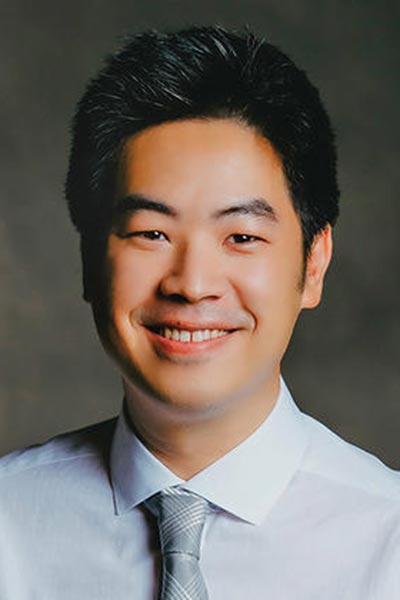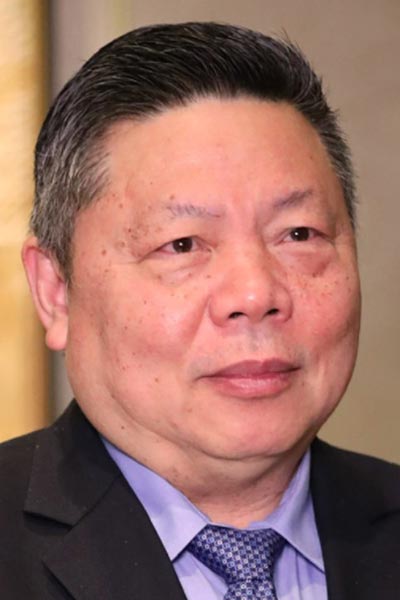While immunotherapy with or without chemotherapy is the standard of care for advanced non-small cell lung cancer (NSCLC) without actionable oncogenic driver mutations, disease progression is inevitable in most patients. There is an unmet need for new therapies for patients whose disease progresses on chemo-immunotherapy, as well as therapies to prevent clinical resistance.
The Novel Immunotherapy Strategies and Combinations session at the 2024 World Conference on Lung Cancer highlighted data from immunotherapy combination studies aimed at boosting the response to immune checkpoint inhibitors (ICIs), by either regulating the timing and direction of anti-inflammatory effects or by directly stimulating innate immune cells.
The session was co-chaired by Cheryl Ho, MD, Associate Professor of Medicine at the University of British Columbia, Canada, and Anil Tibdewal, MD, Associate Professor and Thoracic Radiation Oncologist at Tata Memorial Hospital, India.
Timing of JAK Inhibition Determines Whether Interferon Signaling Stimulates or Suppresses Responses to Immunotherapy

Melina E. Marmarelis, MD, MSCE, Assistant Professor and Medical Director of the Penn Medicine Mesothelioma and Pleural Disease Program at the University of Pennsylvania, Philadelphia, presented long-term follow-up data from a phase II study of pembrolizumab combined with the JAK1 inhibitor itacitinib in patients with metastatic NSCLC.
Dr. Marmarelis outlined the rationale for combining JAK inhibition with ICIs in lung cancer.
“Interferon signaling, which uses the JAK family, can be immunostimulatory or immunosuppressive,” Dr. Marmarelis said. She added that interferon-stimulated genes can be grouped into two classes based on their effect on response to immunotherapy: those that predict response versus those that predict resistance.
Dr. Marmarelis and colleagues suppressed interferon signaling by inhibiting JAK to shift the balance toward a more immunotherapy-responsive milieu. Notably, previous preclinical studies showed that delayed JAK inhibition elicits better anti-tumor responses after initiation of ICI therapy than concurrent JAK inhibitor simultaneous with ICI initiation.
“These data highlight that sustained interferon signaling can lead to T-cell exhaustion. Therefore, delayed inhibition of interferon signaling, via JAK inhibition, can allow for early immune cell activation but also reinvigorates or prevent T-cell exhaustion,” Dr. Marmarelis said.
In the phase II study, treatment-naïve patients with metastatic NSCLC with PD-L1 of at least 50% first received two cycles of pembrolizumab alone, then pembrolizumab plus itacitinib for an additional two cycles, after which pembrolizumab monotherapy was continued until progression.
Although the study was terminated early for administrative reasons, delaying JAK inhibition resulted in an overall response rate of 62%, a median progression-free survival (PFS) of 16 months, and a median overall survival (OS) of 53 months.
Activation of Natural Killer/CD8 positive T Cells Can Rescue Responsiveness to Immunotherapy in Patients with Acquired Resistance to ICIs

John Wrangle, MD, MPH, Associate Professor at the Medical University of South Carolina, Charleston, reviewed an approach for restoring responsiveness in patients with acquired resistance to ICIs—a combination of nivolumab with the interleukin (IL)-15 superagonist nogapendekin alfa inbakicept, also called N-803.
The type 1 cytokine family member IL-15 is known to promote the persistence of natural killer (NK) cells and memory T cells. The function of these cytotoxic lymphocytes is often suppressed in the tumor environment, promoting tumor immune evasion.
N-803 is a novel engineered protein that contains IL-15 complexed with its soluble receptor IL-15Rα. Dr. Wrangle and colleagues assessed whether cytokine therapy with N-803 could restore response and/or arrest progression in patients whose tumors were actively progressing while on ICI therapy. He shared findings on 86 patients enrolled in the phase II QUILT-3.055 study who received N-803 in combination with nivolumab as second- or third-line treatment.

Overall, the combination was well tolerated, with the most common adverse event being injection site reactions. “Importantly, a signal of worsening ICI toxicity was not observed,” Dr. Wrangle said.
The median OS across cohorts, representing different patterns of progression on prior ICI therapy, was 14 months. Moreover, survival was independent of PD-L1 status and prior ICI used (pembrolizumab, nivolumab, or atezolizumab). At 12 months, 57% of patients who received this combination as second- or third-line treatment were alive.
During his presentation, Dr. Wrangle noted that N-803 has been approved by the US Food and Drug Administration to treat patients with non-muscle invasive bladder cancer.
Although multiple immunotherapies targeting PD-L1 and CTLA-4 have been approved and are now integrated into standard lung cancer care, there are limited successful ‘next-generation’ immunotherapies to date

“There is a quest for rational immunotherapy combinations in NSCLC,” said Aaron C. Tan, MBBS, PhD, FRACP, MD, Assistant Professor and Medical Oncologist at the National Cancer Center Singapore.
Additionally, a better understanding of the tumor and tumor microenvironment features that underlie “hot,” “cold,” and “excluded”—or suppressed—tumors could help identify the right rational combination approach to rescue or boost ICI-mediated anti-tumor responses, Dr. Tan said.
The session also featured a presentation by Yi-Long Wu, MD, Professor of Oncology at the Guangdong Lung Cancer Institute in China, who discussed findings from the SAFFRON-301 study of tislelizumab with sitravatinib in advanced NSCLC progressing on or after chemo-immunotherapy.





